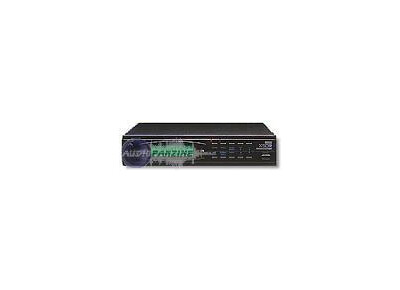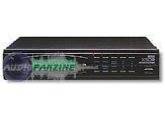Tech. sheet
- Manufacturer: Korg
- Model: X5D/R
- Category: Digital Synth Racks/Sound Modules
- Other names:x5d r, x5dr, x 5d r, x5 d r, x5 dr, x 5d/r, x5 d/r, x5d/r
We have no technical specifications for this product
but your help will be much welcomed
»
User reviews
3.7/5(3 reviews)
5
33 %
4
3
67 %
2
1
Published on 09/11/08 at 00:01
This is a all-around music production module. You have multiple pianos, electric keyboards, synths, pads, strings, bass, etc..... This thing goes all the way with a 88 key midi board, which is really sweet. You get all the things you would expect, pitch, mod, sustain as well as effects controls (I plugged a M-audio axiom board in it and all the faders let you change all sorts of things, attack, sustain, envelope...). As for connections, it has midi in/out/thru, stereo audio out, and a computer host jack all on the back, and a headphone jack on the front panel. This thing has hundreds of sounds (It has 100 sounds in the program section and 100 sounds in the multi section), and 2...…
Read more
This is a all-around music production module. You have multiple pianos, electric keyboards, synths, pads, strings, bass, etc..... This thing goes all the way with a 88 key midi board, which is really sweet. You get all the things you would expect, pitch, mod, sustain as well as effects controls (I plugged a M-audio axiom board in it and all the faders let you change all sorts of things, attack, sustain, envelope...). As for connections, it has midi in/out/thru, stereo audio out, and a computer host jack all on the back, and a headphone jack on the front panel. This thing has hundreds of sounds (It has 100 sounds in the program section and 100 sounds in the multi section), and 2 separate effects engines with 47 effects. This is an older sound module, so I would say the "style" is a hard thing to label. I used this for dance, electronica stuff mainly. If you want sounds that are more interesting than realistic, than this unit would work for you. I never used it with a computer, but I believe it is only able to produce sounds from the midi signal coming from the computer.
It has 64 Polyphony.
UTILIZATION
The general config/setup is very simple. Plug in a keyboard with a midi cord, select a patch from either the program mode or the multi mode, and play. Real simple. As for the editing, you definitely need to read the manual, at least I did, and I never really did to much with it. I have switched mainly to computer programs and find them a lot easier to use. The manual is really nice and very thorough. It will answer all your questions, and after browsing through it, you will probably see that this unit will do more than you thought.
SOUNDS
The sounds were fun at first, I used them on a few tracks, but overall, they are not very realistic and lack a lot of warmth and tone. The unit is over 10 years old so you can't expect to much. The effects are the same way. Nothing really jumped out at me as being "real." Again, if you are into sounds that don't sound real, but rather interesting (Beck uses a lot of sounds and samples that actually kinda suck tone/realistic wise, but in there own way, sound cool...if you know what I mean). I actually used a patch from this unit on the very beginning of the first track on my bands debut album and after a little EQ and reverb (computer plug-ins) it sounded great.
The expressiveness seems fine. The touch sensitivity seemed right on par with my much newer Korg TR. Same with the aftertouch.
There were a few patches that were really interesting. There is this mandolin tremolo patch that I really liked as well as the patch I used on my album called "first snow." What did I hate? The acoustic piano patches, they all SUCK!!!
OVERALL OPINION
I had this unit for a year and a half. I actually just sold it on ebay to help pay for my new laptop. The best thing about this unit is its mass amount of interesting sounds. I would run it through some Moogerfooger pedals I have and get some very cool sounds (in all reality though, anything sounds cool out of those pedals). What I didn't like about it is its lack of realistic sound, especially the Pianos. I also had a Roland JV 1010 that came out about the same time. The Roland has a lot more sounds (around 1000) and a lot of them sounded better, but again the pianos were really bad. These go used for around $150. Not a bad price, but I would recommend saving up a little more money a buying something made in this decade, it will surely give you better quality patches. I actually got mine for $50 locally and sold it on ebay for $126, so if that deal came around again, sure. But no, I would not pay full price for this unit again.
It has 64 Polyphony.
UTILIZATION
The general config/setup is very simple. Plug in a keyboard with a midi cord, select a patch from either the program mode or the multi mode, and play. Real simple. As for the editing, you definitely need to read the manual, at least I did, and I never really did to much with it. I have switched mainly to computer programs and find them a lot easier to use. The manual is really nice and very thorough. It will answer all your questions, and after browsing through it, you will probably see that this unit will do more than you thought.
SOUNDS
The sounds were fun at first, I used them on a few tracks, but overall, they are not very realistic and lack a lot of warmth and tone. The unit is over 10 years old so you can't expect to much. The effects are the same way. Nothing really jumped out at me as being "real." Again, if you are into sounds that don't sound real, but rather interesting (Beck uses a lot of sounds and samples that actually kinda suck tone/realistic wise, but in there own way, sound cool...if you know what I mean). I actually used a patch from this unit on the very beginning of the first track on my bands debut album and after a little EQ and reverb (computer plug-ins) it sounded great.
The expressiveness seems fine. The touch sensitivity seemed right on par with my much newer Korg TR. Same with the aftertouch.
There were a few patches that were really interesting. There is this mandolin tremolo patch that I really liked as well as the patch I used on my album called "first snow." What did I hate? The acoustic piano patches, they all SUCK!!!
OVERALL OPINION
I had this unit for a year and a half. I actually just sold it on ebay to help pay for my new laptop. The best thing about this unit is its mass amount of interesting sounds. I would run it through some Moogerfooger pedals I have and get some very cool sounds (in all reality though, anything sounds cool out of those pedals). What I didn't like about it is its lack of realistic sound, especially the Pianos. I also had a Roland JV 1010 that came out about the same time. The Roland has a lot more sounds (around 1000) and a lot of them sounded better, but again the pianos were really bad. These go used for around $150. Not a bad price, but I would recommend saving up a little more money a buying something made in this decade, it will surely give you better quality patches. I actually got mine for $50 locally and sold it on ebay for $126, so if that deal came around again, sure. But no, I would not pay full price for this unit again.
See less
00
»
More current but still very good with programming
Published on 04/22/14 at 14:14 (This content has been automatically translated from French)ROMpler expander, 16bit 48Khz sampling, 8MB ROM, 430 samples without the possibility of extension. 2 multi-effects. A pair of stereo outputs, no separate output. Midi in / out / thru.
GM 8 drum kits, 100 memory locations for patches and 100 multi (combi). Polyphony 64 notes max.
The sounds are editable, single or double oscillator mode. Pitch EG shared by LFO 1 patch, but non-resonant filter with an effect that can get closer.
UTILIZATION
The config is simple and the manual is correct, but even for me who am not a sissy, it's hassle to program with a few buttons.
There are PC vendors (SoundQuest, XEdit, X5 Edit Pro). I personally use OR / Well Atari ST that costs a few dollars....…
GM 8 drum kits, 100 memory locations for patches and 100 multi (combi). Polyphony 64 notes max.
The sounds are editable, single or double oscillator mode. Pitch EG shared by LFO 1 patch, but non-resonant filter with an effect that can get closer.
UTILIZATION
The config is simple and the manual is correct, but even for me who am not a sissy, it's hassle to program with a few buttons.
There are PC vendors (SoundQuest, XEdit, X5 Edit Pro). I personally use OR / Well Atari ST that costs a few dollars....…
Read more
ROMpler expander, 16bit 48Khz sampling, 8MB ROM, 430 samples without the possibility of extension. 2 multi-effects. A pair of stereo outputs, no separate output. Midi in / out / thru.
GM 8 drum kits, 100 memory locations for patches and 100 multi (combi). Polyphony 64 notes max.
The sounds are editable, single or double oscillator mode. Pitch EG shared by LFO 1 patch, but non-resonant filter with an effect that can get closer.
UTILIZATION
The config is simple and the manual is correct, but even for me who am not a sissy, it's hassle to program with a few buttons.
There are PC vendors (SoundQuest, XEdit, X5 Edit Pro). I personally use OR / Well Atari ST that costs a few dollars.
Otherwise there's no mystery, it's pretty classic.
SOUNDS
The samples are clean and curly. The drum sounds are varied and friendly. But it's still rompleur 90s, and I think that sounds lack of heat. It is true that given the polyphony can be easily stacked in combo and then this little beast really gets thick.
Search on Youtube that JayB managed to pull this expander: it made techno sounds really great and you can download for free (thank you to him!)
Multi effects are nice, clean and efficient, but in a multi-timbral setup, we realize that the basic sounds are really "naked."
If he wants to keep his place in a modern studio, you really stack sounds for wealth, otherwise it is flat die.
OVERALL OPINION
I had my first in 2005 I think. I sold it because I found it desperately flat. But his percussion, its effects and combi missed me, I bought another a few years later. He really deserves to be given a chance, but you have to think to get a graphical editor.
With experience, I think I do not have that choice. I often preferred my E-MU Proteus 1000 which has magnificent filters, larger modulation possibilities, much more memory, knobs and a more fluid interface, which sounds even without effect, stand rather property. But the potential of X5D / R and some are legendary M1 that I like, finally.
GM 8 drum kits, 100 memory locations for patches and 100 multi (combi). Polyphony 64 notes max.
The sounds are editable, single or double oscillator mode. Pitch EG shared by LFO 1 patch, but non-resonant filter with an effect that can get closer.
UTILIZATION
The config is simple and the manual is correct, but even for me who am not a sissy, it's hassle to program with a few buttons.
There are PC vendors (SoundQuest, XEdit, X5 Edit Pro). I personally use OR / Well Atari ST that costs a few dollars.
Otherwise there's no mystery, it's pretty classic.
SOUNDS
The samples are clean and curly. The drum sounds are varied and friendly. But it's still rompleur 90s, and I think that sounds lack of heat. It is true that given the polyphony can be easily stacked in combo and then this little beast really gets thick.
Search on Youtube that JayB managed to pull this expander: it made techno sounds really great and you can download for free (thank you to him!)
Multi effects are nice, clean and efficient, but in a multi-timbral setup, we realize that the basic sounds are really "naked."
If he wants to keep his place in a modern studio, you really stack sounds for wealth, otherwise it is flat die.
OVERALL OPINION
I had my first in 2005 I think. I sold it because I found it desperately flat. But his percussion, its effects and combi missed me, I bought another a few years later. He really deserves to be given a chance, but you have to think to get a graphical editor.
With experience, I think I do not have that choice. I often preferred my E-MU Proteus 1000 which has magnificent filters, larger modulation possibilities, much more memory, knobs and a more fluid interface, which sounds even without effect, stand rather property. But the potential of X5D / R and some are legendary M1 that I like, finally.
See less
30
»
Published on 12/26/05 at 18:00 (This content has been automatically translated from French)
This is the equivalent of 1U rack Korg X5D, possdant display two lines of a 10aine characters each. 10 buttons for navigating menus and changing values, a headphone jack and a volume knob. For the rear face, two jack outputs (left / mono and right), midi in, out and through, and dedicates a decision to give the TRANSFR to a PC or a MAC, n REQUIRES a cable spcial.
There are two banks of 100 programs, 100 combinations of two banks and the bank gnral noon. However, you can load into memory a vivid combination of bank and a bank of both programs.
All parameters are modifiable (LFO, VCF, VCA, EG (ADSR), mods ...). The particularity of this synth (and selling its output) is to load two...…
There are two banks of 100 programs, 100 combinations of two banks and the bank gnral noon. However, you can load into memory a vivid combination of bank and a bank of both programs.
All parameters are modifiable (LFO, VCF, VCA, EG (ADSR), mods ...). The particularity of this synth (and selling its output) is to load two...…
Read more
This is the equivalent of 1U rack Korg X5D, possdant display two lines of a 10aine characters each. 10 buttons for navigating menus and changing values, a headphone jack and a volume knob. For the rear face, two jack outputs (left / mono and right), midi in, out and through, and dedicates a decision to give the TRANSFR to a PC or a MAC, n REQUIRES a cable spcial.
There are two banks of 100 programs, 100 combinations of two banks and the bank gnral noon. However, you can load into memory a vivid combination of bank and a bank of both programs.
All parameters are modifiable (LFO, VCF, VCA, EG (ADSR), mods ...). The particularity of this synth (and selling its output) is to load two waves in a same program, allowing CRER sounds richer. Today, a stepfather may trivial, as the multitimbral become a common thing trs.
All the classics are the effects (lots of chorus, delay and reverb DIFFERENT, flanger, phaser, rotary ...) and are compltement customizable. You can also change the patches of these effects (SERIES, parallle ...).
In short, all the CHARACTERISTICS of a big synth in a small box. However, for some Settings, margins maneuvers are a little strait, as the depth of the phaser, and it is a shame not to enjoy that a bank once.
UTILIZATION
The manual is very well done, complete with numerous illustrations.
A program can accder trs quickly thanks to the buttons 1 and 10, especially since they are subtly disposs 10 in 10: and 1, 11, 21, 31 ... are the pianos, 6, 16, 26 ... organs etc ... it is very easy to have in memory all the instruments available.
For cons, the edition is a real ordeal if you do not connect the cable to the computer. Must navigate, full of menus, and change the values of 1 in 1 ... everything on a tiny screen.
But it wants a size, and the good point is that this synth is extremely portable. You can walk with no problem, and it's really enjoyable to go to rehearsals traveling "light".
SOUNDS
There are plenty of sounds to please everyone, unless you have a techno or electronic music. Tablecloths, analog leads and basses are not terrible.
As against all other styles are welcome: I personally do rock and I have good pianos, rhodes good, and good organ. The effects of distortion and overdrive allow me to mimic the saturation of amplifiers.
However, there is no amp simulation, and sounds are plutt "cold", one could say mtalliques ...
The instruments are good classical, brass and wood are well rendered. The violin is ugly, but the strings and basses are well.
Beware, I say it all over a synth of this era. For example, if we compare with the Roland JV-1080: the Korg is much better for natural instruments, the Roland will be better for electronic instruments. If you do your habit to high-end, as Kurztweil, sr well, it's pretty lightweight.
However, a small black box as a I find a compelling trs.
OVERALL OPINION
I jou over 5 years. I have been flying two years ago, and I ratchet keyboards much more luxurious, but I try to redeem Used by nostalgia.
The 1U is so much more convenient! You can take it under his arm, if it Yadji a keyboard there, and you still have your sounds with you.
The sounds are good for traditional instruments, many effects may be lacking a little relief, and ACCS all custom settings ...
I would recommend for beginners, wanting to get into a group: all sounds are ncessaires the trs and quickly accessible "live". It is easy to change lgrement sound, but it is laborious trs start of ZrO.
There are two banks of 100 programs, 100 combinations of two banks and the bank gnral noon. However, you can load into memory a vivid combination of bank and a bank of both programs.
All parameters are modifiable (LFO, VCF, VCA, EG (ADSR), mods ...). The particularity of this synth (and selling its output) is to load two waves in a same program, allowing CRER sounds richer. Today, a stepfather may trivial, as the multitimbral become a common thing trs.
All the classics are the effects (lots of chorus, delay and reverb DIFFERENT, flanger, phaser, rotary ...) and are compltement customizable. You can also change the patches of these effects (SERIES, parallle ...).
In short, all the CHARACTERISTICS of a big synth in a small box. However, for some Settings, margins maneuvers are a little strait, as the depth of the phaser, and it is a shame not to enjoy that a bank once.
UTILIZATION
The manual is very well done, complete with numerous illustrations.
A program can accder trs quickly thanks to the buttons 1 and 10, especially since they are subtly disposs 10 in 10: and 1, 11, 21, 31 ... are the pianos, 6, 16, 26 ... organs etc ... it is very easy to have in memory all the instruments available.
For cons, the edition is a real ordeal if you do not connect the cable to the computer. Must navigate, full of menus, and change the values of 1 in 1 ... everything on a tiny screen.
But it wants a size, and the good point is that this synth is extremely portable. You can walk with no problem, and it's really enjoyable to go to rehearsals traveling "light".
SOUNDS
There are plenty of sounds to please everyone, unless you have a techno or electronic music. Tablecloths, analog leads and basses are not terrible.
As against all other styles are welcome: I personally do rock and I have good pianos, rhodes good, and good organ. The effects of distortion and overdrive allow me to mimic the saturation of amplifiers.
However, there is no amp simulation, and sounds are plutt "cold", one could say mtalliques ...
The instruments are good classical, brass and wood are well rendered. The violin is ugly, but the strings and basses are well.
Beware, I say it all over a synth of this era. For example, if we compare with the Roland JV-1080: the Korg is much better for natural instruments, the Roland will be better for electronic instruments. If you do your habit to high-end, as Kurztweil, sr well, it's pretty lightweight.
However, a small black box as a I find a compelling trs.
OVERALL OPINION
I jou over 5 years. I have been flying two years ago, and I ratchet keyboards much more luxurious, but I try to redeem Used by nostalgia.
The 1U is so much more convenient! You can take it under his arm, if it Yadji a keyboard there, and you still have your sounds with you.
The sounds are good for traditional instruments, many effects may be lacking a little relief, and ACCS all custom settings ...
I would recommend for beginners, wanting to get into a group: all sounds are ncessaires the trs and quickly accessible "live". It is easy to change lgrement sound, but it is laborious trs start of ZrO.
See less
21
»
Manuals and other files
Other Korg digital Synth Racks/Sound Modules
-
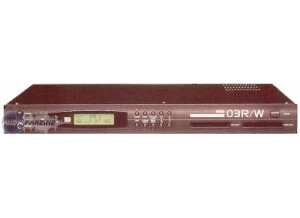
03R/W
Digital Synth Rack/Sound Module
-
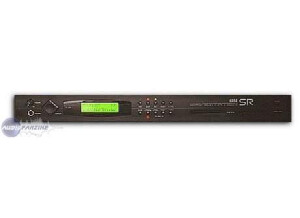
WaveStation SR
Digital Synth Rack/Sound Module
-
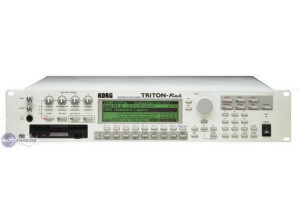
Triton Rack
Digital Synth Rack/Sound Module
-
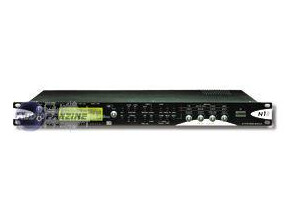
N1R
Digital Synth Rack/Sound Module
-
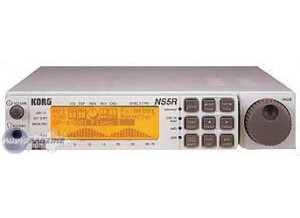
NS5R
Digital Synth Rack/Sound Module
-
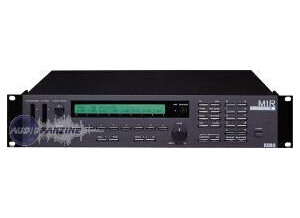
M1R-Ex
Digital Synth Rack/Sound Module
-
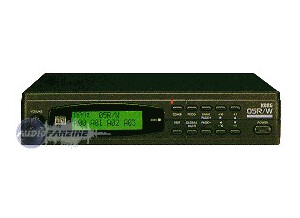
05R/W
Digital Synth Rack/Sound Module
-
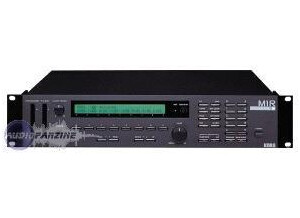
M1R
Digital Synth Rack/Sound Module
$100 new (1 offer) -
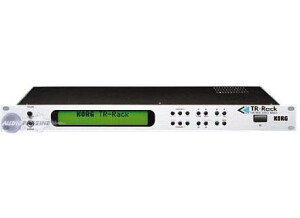
TR-Rack
Digital Synth Rack/Sound Module
-
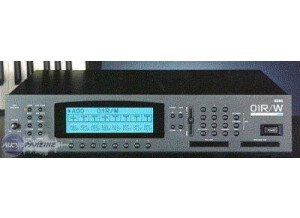
01R/W
Digital Synth Rack/Sound Module

